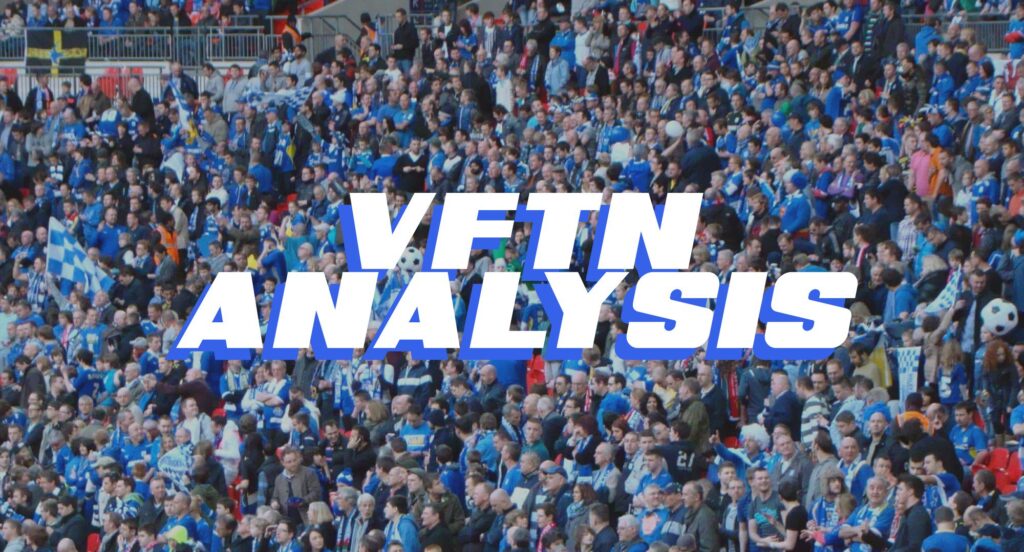By the end of play on gameday eight in the Premier League, Cardiff City found themselves bottom of the Premier League. Huddersfield’s 1-1 draw with Burnley, the side that beat Cardiff last weekend, meant that the Bluebirds fell to 20th, with just two points from eight games.
There was a strange feeling among the Cardiff faithful come the final whistle at Wembley on Saturday afternoon. Despite another loss, despite falling to the bottom of the table and despite a Joe Ralls red card, there was a fresh feeling of optimism.
Cardiff had played well; given Tottenham a good game and probably could’ve snatched a draw. Harry Kane also continued his record of never scoring against Cardiff – we are the only Premier League club he’s failed to score against.
So what can we make of the 1-0 loss? Well, there’s plenty of positives that’s for sure. Read on for the VFTN analysis of the loss that gives optimism.
Have you read Terry Phillips’ match report and player ratings? Come on! What are you waiting for?
Systems
While the Cardiff City graphic showed the line-up in a 4-4-1-1 system, in truth it resembled more of a 4-5-1 system.
#TOTCAR team news!
Brought to you by @1xbet_Eng…#CityAsOne ?⚽️?⚽️ pic.twitter.com/yl4khMewHS
— Cardiff City FC (@CardiffCityFC) October 6, 2018
The big call was Callum Paterson up top, ahead of Danny Ward, Bobby Reid and Kenneth Zohore. Victor Camarasa moved centrally, alongside Joe Ralls and Harry Arter, while Josh Murphy and Junior Hoilett flanked Paterson, but made inverted runs once in the final third.
For Spurs, it was four at the back and two holding midfielders in Eric Dier and Harry Winks. The four in front of them were extremely fluid, changing positions at all times.
#THFC: Lloris (C), Trippier, Alderweireld, Sanchez, Rose, Dier, Winks, Sissoko, Lucas, Son, Kane.
Latest @WilliamHill odds – https://t.co/1uUS2Qwi4N pic.twitter.com/WuTmJhgEi6
— Tottenham Hotspur (@SpursOfficial) October 6, 2018
What the stats say
Cardiff did well and the stats reflect that. Six shots on target away to one of the league’s big clubs is something to be pleased about and while City didn’t dominate possession (they were never going to!), they did come up trumps in the fields you’d expect; aerial duels. Spurs won 18 tackles in the match, with the majority taking place in their own half which suggests Cardiff did put them under pressure.
The xG (expected goals) stat, though, tells us that Cardiff failed to create too many quality chances. An xG of 2.42 for Spurs compared to 1.17 for Cardiff suggests that Spurs deserved to win the game.
Better balance
In returning to last season’s favoured formation of a 4-3-3/4-5-1 hybrid, Neil Warnock achieved a better balance to his side at Wembley. Cardiff were able to apply appropriate pressure in the midfield, without being overrun as we have seen in recent weeks.
Having two out and out widemen playing off a target man certainly helped too, giving Cardiff a better outlet than we’ve seen in recent weeks. More on that to come.
Paterson leads the line well
For a right back, Callum Paterson lead the line exceptionally well for Cardiff City on Saturday. While it would be easy to question our striking options if we’re playing a player signed as a right-back up top, I’d rather focus on what the Scotsman brought to the side.
Paterson is certainly a presence, and gave the Spurs centre-backs a tough afternoon. He won eight of his aerial duels, more than any other player on the pitch. For comparison, the Spurs centre-halves (Sanchez and Alderweireld) won just three aerial duels between them.
This was a clear threat for Cardiff, with Paterson linking up well with Josh Murphy in particular. The former Norwich man has plenty of pace and was able to run onto a Paterson flick on on a number of occasions.

In the example above, Paterson wins the flick on and Murphy and Hoilett are looking to run in behind straight away. This is a clear tactic from Warnock. In this move, which was arguably Cardiff’s best chance of the match, Murphy beats the Spurs defenders for pace and lifts it over Loris, only for Alderweireld to beat Hoilett to it and clear it off the line.
The Cardiff press
It was back. We saw the effective press against Arsenal, but in the last few matches Cardiff have pressed their opposition less. Against Tottenham, though, Cardiff were effective in pressing the midfield.

In the example above, Paterson has pressed but Spurs have a spare centre-half. This is always going to happen when you’re playing one up top, but where Cardiff are clever is how they pressed Spurs’ midfield men.
We can see Harry Arter cutting off the passing option to Eric Dier and Victor Camarasa ready to press Harry Winks. This forces Spurs to look long.
Harry Kane drops deep to avoid Cardiff man marking
Neil Warnock is a fan of man-marking and often instructs his players to go man for man across the field. This is clearly something that Mauricio Pochettino was wary of when he set up his side.

Throughout the match, Harry Kane would drop deep into midfield to pick up the ball. In his place, Spurs’ three attacking midfielders would look to many runs in behind, therefore occupying Cardiff’s back line.
Although Kane did not get on the scoresheet, this caused Cardiff a lot of problems as Kane continued to find space due to the lack of real holding midfielder.
In the example above you can see that Harry Arter, who has gone to press his man Eric Dier, is frustrated that he’s been easily bypassed as nobody has tracked Kane who has dropped deep to receive the ball.
Cardiff’s defenders are in two minds; do they drop deep with Kane or do they stay with the man running through from midfield. Sol Bamba is caught in no mans land, neither following Kane or goal side of Sissoko.
